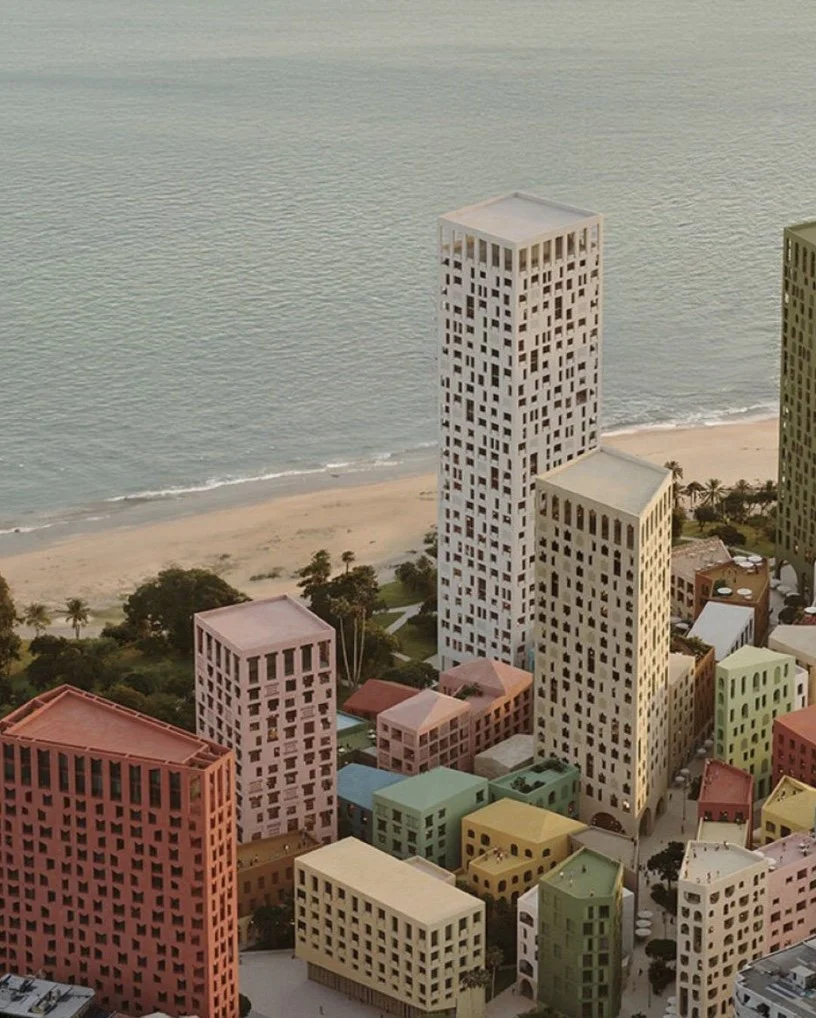생활의 확장, 주거의 재정의 | Expansion of Living, Redefinition of Dwelling
주거는 더 이상 하나의 주소에 머물러 있지 않다. 도시는 흩어져 있던 우리의 생활 단위를 다시 연결할 준비가 되어 있으며, 이 연결을 통해 우리는 ‘확장된 집’을 구성할 수 있다.
Dwelling is no longer confined to a single address.The city is ready to reconnect the dispersed units of our daily life, allowing us to construct an “expanded home” through these connections.
주거의 경계를 넘어, 지역을 설계하다
Beyond the Boundaries of Dwelling: Designing at the Neighborhood Scale
우리는 여전히 주거를 하나의 건물 안에서 완전히 폐쇄된 단위로 이해해왔다. 하지만 현대의 삶은 이미 그 경계를 넘어섰다. 사람들의 하루는 여러 공간을 가로지르며 흩어져 있는 생활 인프라 위에서 이루어지고, 프라이빗·세미프라이빗·세미퍼블릭 영역이 자연스럽게 겹치며 확장된다. 이런 맥락에서 나는 Privacy Tiers를 건물 내부 개념에서 벗어나 생활 단위 전체를 구조화하는 설계 원리로 재해석했다.
We have still understood dwelling as a completely enclosed unit within a single building. Yet contemporary life has already surpassed this boundary. Daily routines traverse multiple spaces spread across dispersed living infrastructure, and Private, Semi-Private, and Semi-Public layers naturally overlap and expand. In this context, I reinterpreted Privacy Tiers beyond the confines of a building, using it as a design principle to structure entire living units.
Living Unit Block — 생활의 최소 단위
**Living Unit Block (LUB)**은 프라이빗, 세미프라이빗, 세미퍼블릭의 층위를 하나의 건물 안에서 논리적으로 배열한 생활의 최소 단위다. 상층부의 사적 공간에서 아래로 내려갈수록 공유되는 영역이 나타나며, 작은 커뮤니티 라운지, 공용 스튜디오, 근린에게 열린 1층 카페나 워크숍 등으로 이어진다. 이 구조는 단순히 공간을 섞는 것이 아니라, 생활 경험의 흐름 자체를 건축적 단위로 만드는 것을 목표로 한다.
LUB는 현대 주거의 새로운 형태를 보여주며, 사람과 지역, 공동체를 연결하는 최소 관문이 된다.
The Living Unit Block (LUB) is the minimal unit of living, where Private, Semi-Private, and Semi-Public layers are logically arranged within a single building.
As one moves from the private upper floors downward, shared areas emerge—small community lounges, shared studios, and first-floor cafes or workshops open to the neighborhood. This structure is not just a mix of spaces; it aims to transform the flow of living experience itself into an architectural unit.
LUB demonstrates a new form of contemporary dwelling, serving as a minimal gateway connecting individuals, the neighborhood, and the community.
프라이버시 층위를 기반으로 한 생활의 최소 모듈
공간을 단순히 혼합하지 않고 생활 경험의 흐름을 구조화
내부와 외부를 연결하는 건축적 관문
Minimal living module based on privacy layers
Organizes the flow of living experience rather than mixing spaces
Architectural gateway connecting interior and exterior
Living Cluster — 작은 마을 단위
여러 LUB가 모여 형성되는 작은 생활권이 **Living Cluster (LC)**다. 서울 연남동, 제주 연동, 강원 영월 등에서 볼 수 있는 골목 단위 생활처럼, LUB들이 걸어서 접근 가능한 거리 안에서 배치되면, 집과 지역, 커뮤니티가 유기적으로 연결된다. 예를 들어, 코워킹 스튜디오, 작은 공용 정원, 동네 도서 라운지와 공방 등이 서로 분산되어 있지만 하나의 생활 지형을 이루는 형태다.
LC는 도시의 과밀한 수직 집중을 완화하고, 사람들에게 ‘골목 단위 생활’을 경험하게 한다.
The Living Cluster (LC) is the small-scale living area formed by multiple LUBs.
Similar to alley-based units in Seoul’s Yeonnam-dong, Jeju’s Yeondong, or Gangwon’s Yeongwol, LUBs placed within walkable distances organically connect home, neighborhood, and community. For example, coworking studios, small public gardens, local library lounges, and workshops are dispersed yet form a cohesive living terrain. LC alleviates vertical over-concentration in cities and allows residents to experience life at the scale of alley-based living.
여러 LUB가 모여 형성되는 작은 생활권
분산형, 보행 중심의 생활 인프라
하나의 네트워크로 작동하는 골목 단위 생활
Small-scale living area formed by multiple LUBs
Distributed, walkable daily infrastructure
Alley-scale living operating as a cohesive network
Living Network — 도시를 가로지르는 생활권
서로 다른 지역의 LC가 공통 구조를 공유하며 연결될 때, **Living Network (LN)**가 완성된다. 서울 연남 LC, 제주 연동 LC, 강원 영월 LC는 각각 다른 지역이지만 동일한 생활 구조를 갖고 있어, 사용자는 지역을 이동해도 일상과 커뮤니티 경험을 유지할 수 있다. LN은 주거의 고정성을 넘어 ‘생활의 연결’을 강조하며, 도시 전체를 **‘확장된 집’**으로 재해석하게 한다. 사람들은 특정 장소에 머물러야 하는 의무에서 벗어나, 다양한 지역에서 자신의 리듬에 맞는 생활을 구성할 수 있다.
The Living Network (LN) is formed when LC nodes across different regions share a common structure and connect. Seoul Yeonnam LC, Jeju Yeondong LC, and Gangwon Yeongwol LC, although in different regions, follow the same living structure, allowing residents to maintain daily routines and community experiences even when moving between locations. LN emphasizes the connectivity of living beyond the fixed nature of dwelling, reinterpreting the entire city as an “expanded home”. People are no longer bound to a single place but can structure their lives across multiple regions according to their personal rhythms.
여러 지역의 LC를 연결한 확장형 생활 네트워크
이동해도 유지되는 생활의 리듬
도시 전체를 **‘확장된 주거’**로 재해석
Expanded living network connecting LCs across regions
Preserves daily rhythm regardless of location
Reinterprets the city as an “expanded home”
실험적 도전과 지속 가능성
Experimental Challenge and Sustainability
포테이토 앨리 프로젝트는 생활 단위와 네트워크를 재해석하는 실험적 도전이다. 그러나 이러한 실험적 설계가 실제 생활 속에서 지속 가능하려면, 경제적 효율성, 운영상의 타당성, 그리고 공간 활용의 현실성에 대한 고민이 필수적이다. 단순히 이상적인 설계를 제시하는 것이 아니라, 현실적 조건과 조화를 이루며 지속 가능한 도시 생활 모델로 발전할 수 있는지 끊임없이 검토하고 있다.
The Potato Alley Project represents an experimental challenge in reinterpreting living units and networks. However, for such experimental designs to be sustainable in everyday life, considerations of economic efficiency, operational feasibility, and practical spatial usage are essential. The goal is not merely to propose an idealized design, but to continuously examine whether it can evolve into a sustainable urban living model in harmony with real-world conditions.






